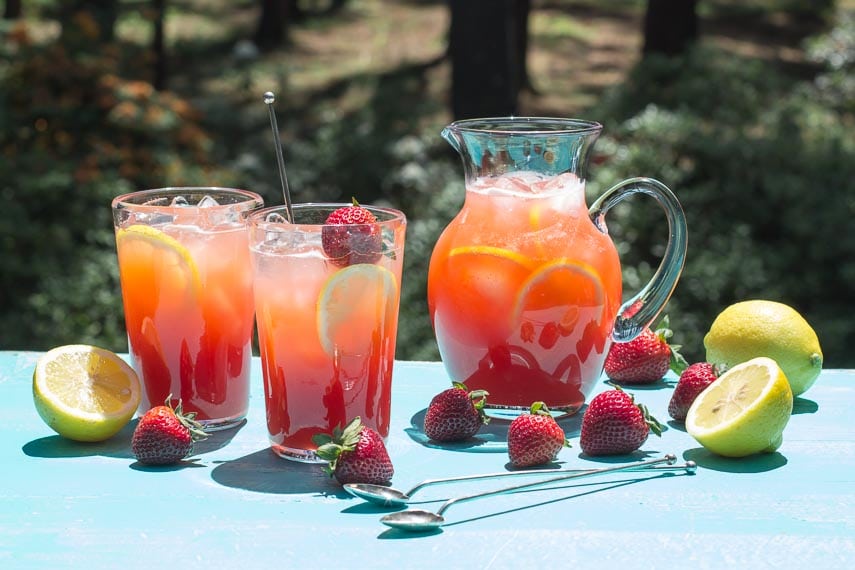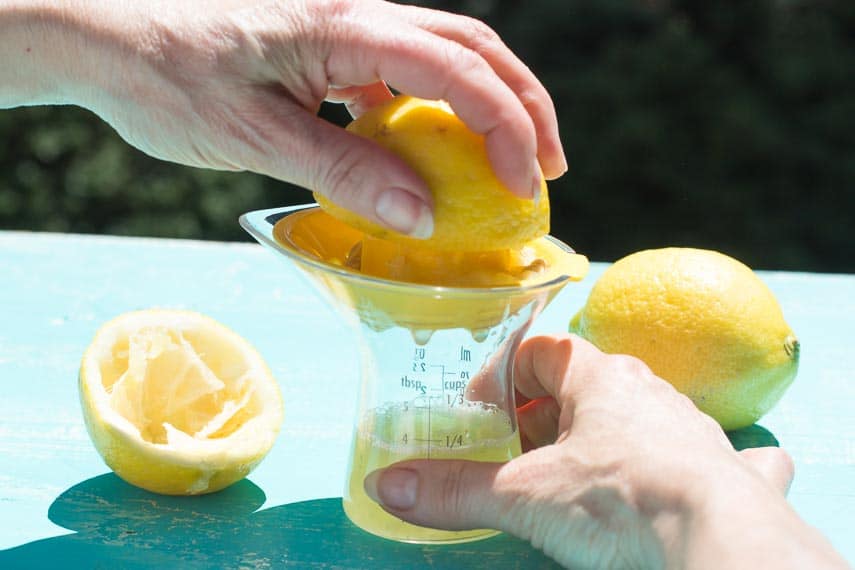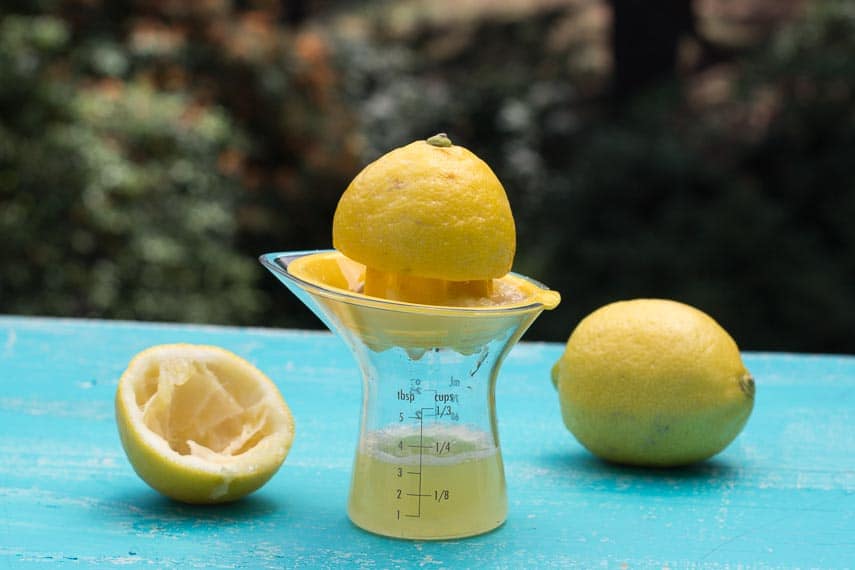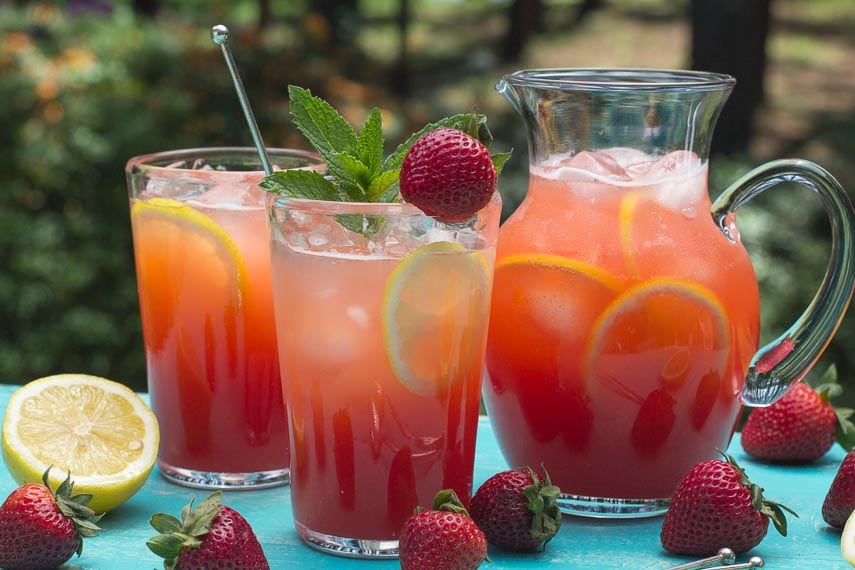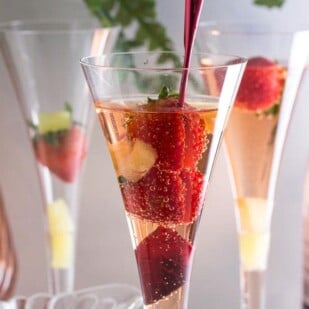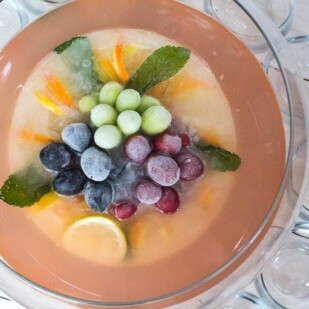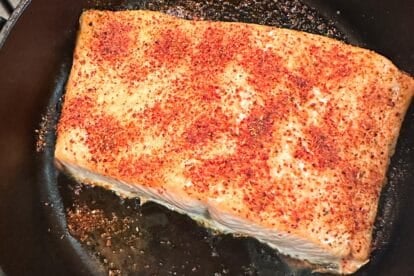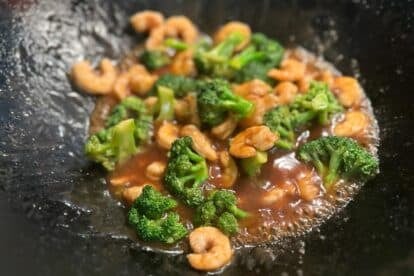Tart & Sweet, Meet Our Super Simple Strawberry Lemonade
Our Strawberry Lemonade is super-simple to make and looks like a party! Certainly consider making this at your next celebration, but don’t overlook making it just for you and your family to keep in the fridge for thirst-quenching all summer long.
You start by making a strawberry purée and please do use fresh lemons, as the flavor is incomparable. We love our new OXO citrus reamer. It is an inexpensive tool and works very well.
Water, Sparkling Water – or Champagne!
Once you have made your strawberry lemonade base with pure cane sugar you can vary the final drink by using water, sparkling water or even champagne to top it off! Your choice. Sparkling wines are low FODMAP in 150 ml portions, so go for it.
Garnish – Or Not
The Strawberry Lemonade is fantastic as is, but feel free to gussy it up in glasses with sprigs of mint, slices of lemon or an extra berry to munch on.
Note on Yield
The yield, you will notice, varies hugely. This is because you first make the strawberry lemon base and that ends up equaling about 3 cups (720 ml). Then, you add water, sparkling water or even sparkling win to taste. Depending on how strong you like it, you might use a 1:1 ratio, or you might like additional water. Your choice.
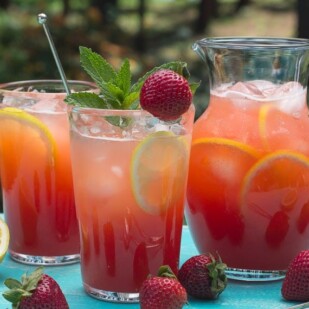
Low FODMAP Strawberry Lemonade
This Low FODMAP Strawberry Lemonade is incredibly refreshing and easy to make.
Low FODMAP Serving Size Info: Makes about 1 ½ quarts to 3 quarts (1.4 L to 2.8 L); serving size 1 cup (240 ml)
Ingredients:
- 1/2 pound (225 g) strawberries, hulled and halved
- 1 1/2 cups (360 ml) freshly squeezed lemon juice (from about 6 large lemons), divided
- 1 cup (198 g) sugar (see Tips)
- 3 to 6 cups (720 ml to 1.4 L) ice cold water
- Ice
- Lemon slices, extra strawberries, and/or mint, optional
Preparation:
-
Place strawberries in carafe of blender along with ¼ cup (60 ml) of lemon juice and blend on high until smooth. Press through a wire-meshed strainer to remove seeds; discard the seedy pulp.
-
Place the resulting strawberry purée, remaining lemon juice and sugar in a bowl and whisk together well to dissolve sugar. This is your base and it will equal about 3 cups (720 ml).
-
Now you can add water (or sparkling water, or sparkling wine) and transfer to a large pitcher, adding ice as desired, or perhaps not if you are using sparkling wine. Start with a 1:1 ratio of strawberry lemon base and water and adjust to your taste from there.
-
Or, you can make it by the glass, again starting by combining equal amounts of purée and water or to taste (but watch your FODMAPs if you are adding champagne. You can have up to 5 ounces/150 ml).
-
Strawberry Lemonade is ready to serve or can be refrigerated for up to 3 days. It will last longer but lose a little bit of its freshness. Add ice at serving time - or perhaps not if you are using sparkling wine.
Notes:
Tips
- If you have superfine sugar around, it will dissolve most easily, but it isn’t necessary.
Nutrition
All nutritional information is based on third-party calculations and should be considered estimates. Actual nutritional content will vary with brands used, measuring methods, portion sizes and more. For a more detailed explanation, please read our article Understanding The Nutrition Panel Within Our Recipes.
